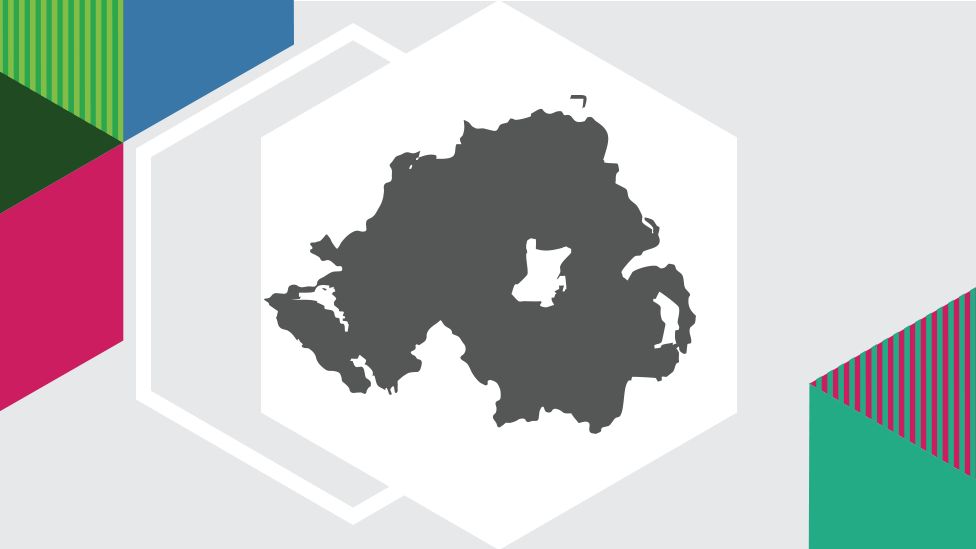NI election results 2022: The assembly poll in maps and charts
- Published

Counting is nearing the finish line in the Northern Ireland Assembly election, with Sinn Féin set to win the largest number of seats for the first time.
The DUP is set for second place while the Alliance Party is on course to become the third-largest party in the assembly.
Turnout (63.6%) was only slightly down on the 64.8% recorded in the last assembly election in 2017.
Sinn Féin vote holds while Alliance increases
Sinn Féin saw its first preference vote share rise by 1.1% as it repeated its impressive performance from 2017.
Meanwhile the DUP's vote dropped by 6.7% and Alliance's rose by 4.5%.
Full results for all Northern Ireland seats are expected later on Saturday.
The results reflect a growing trend for Alliance in recent years, while the DUP's rapid rise at the start of the century tailed off before experiencing a significant drop.
Support for the SDLP and UUP has fallen more steadily.
'Others' make gains
Parties - and independents - in the Northern Ireland Assembly designate as unionist, nationalist or other.
Unionists want Northern Ireland to remain part of the United Kingdom, while nationalists want Northern Ireland and the Republic of Ireland to unite as one country.
Parties which have designated as other have held various views. Alliance does not take a position on Irish unity, while People Before Profit supports a referendum on Irish unity and would campaign for unity if one was called.
At this election the proportion of seats won by other parties rose significantly, up to 18 from the 11 won at the last election - 20% of the total seats.
Of those seats, 17 were won by Alliance and one by People Before Profit.
Both unionism and nationalism lost seats. Unionism, dropped by three seats to 37 - 41% - while nationalism fell from 39 to 35 seats - 39% of the total.
Rising number of women
Women are still outnumbered almost two-to-one in the assembly, but a record number were elected this time around.
In total 32 female candidates were returned to sit on the blue benches at Stormont.
It is a big change from the first election where more than 75% of assembly members were male.
This election also saw a record number of female candidates.
The geographic spread
Sinn Féin's vote was once again spread across Northern Ireland, but was particularly strong in Newry and Armagh, Mid Ulster, West Tyrone and Belfast West.
Despite the DUP's drop in support, the votes it did win were also spread widely across NI. Its strongest performances were in Strangford, Lagan Valley and Belfast East.
Alliance has traditionally performed best in the east of Northern Ireland and that remains the case, with strong results in East Antrim, Lagan Valley, Belfast East, South Antrim, North Down and Strangford.
But its vote share did also increase in other areas such as West Tyrone and Foyle.
Ulster Unionist support remains best in some of its traditional heartland constituencies including Fermanagh and South Tyrone, Lagan Valley and East Antrim.
The SDLP produced another strong performance in Foyle, and also polled well in Belfast South and South Down.
Only a small dip in turnout
Turnout in 2017 was high, and it had been predicted that it would drop this year.
In the end that did prove to be the case but it only dropped by 1.2 percentage points.
Turnout was highest in Mid Ulster, Fermanagh and South Tyrone, and Newry and Armagh.
Related Topics
- Published8 May 2022